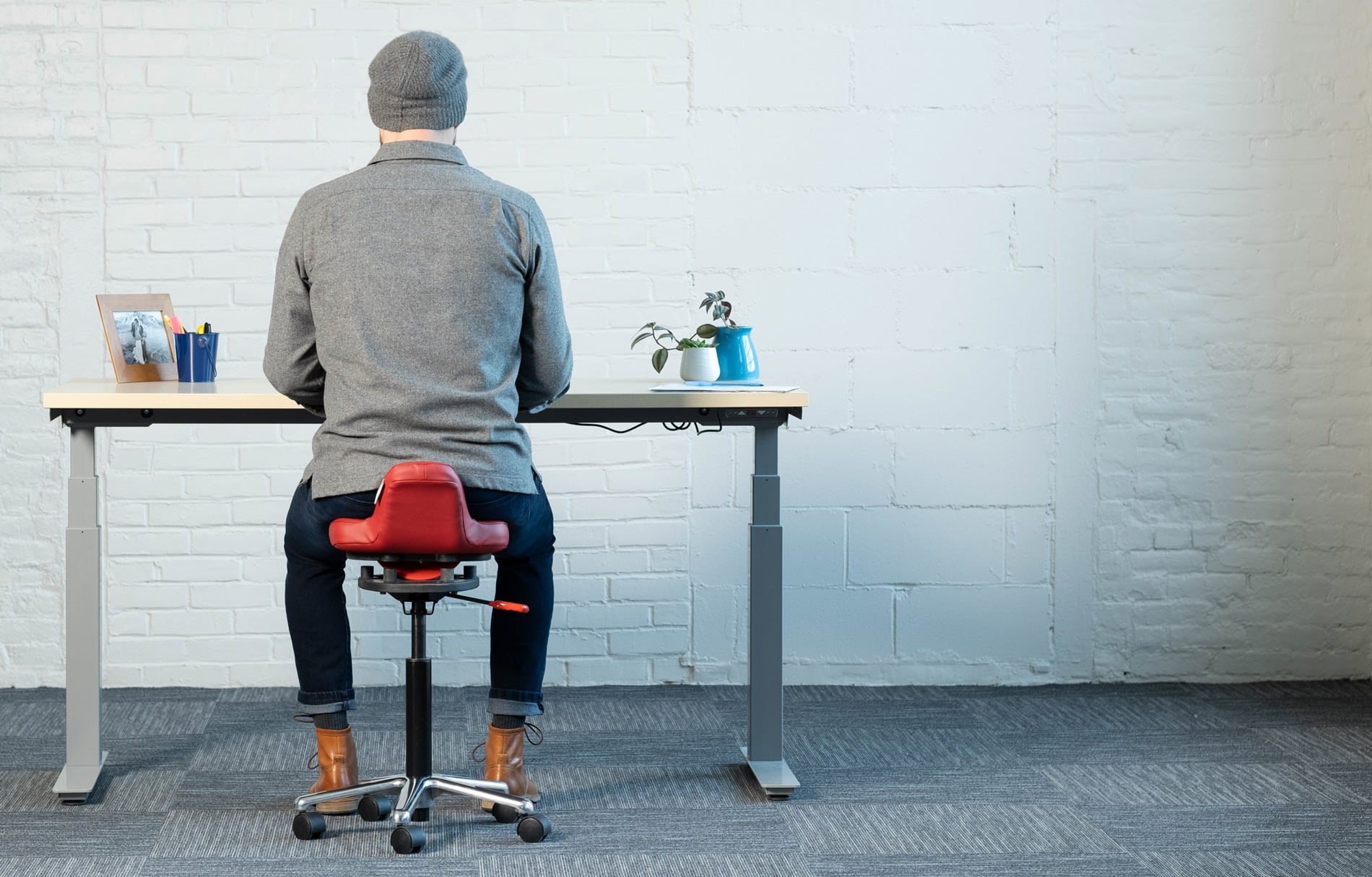We recently got an email from Doug, an enthusiastic active sitting convert that read in part: “… the seat disappears”.
We’ve heard this phrase before from other customers who are pleasantly surprised at just how small our chair’s footprint is. They’re delighted that our chairs take up little space in their office during the day, and then disappear under their desk at day’s end. This isn’t an accident, of course. We went to some effort to make our chairs small but also light and strong, a combination that not only makes them easier to move around but also reduces their ecological impact: a carefully designed chair can do everything necessary while minimizing the materials required to make it. The result is that our chairs weigh less than half of what a standard “ergonomic” office chair weighs. It wasn’t an “easy lift” for us to make our chairs an easy lift for our customers and our planet, but we’re happy with the result.
“Once your chair disappears from your awareness, your attention is freed to flow into the task at hand, even if it’s only answering email.”
Dr. Turner Osler
But on rereading Doug’s email it turned out he had something else entirely in mind. His review actually enthused: “No arms … the whole body is engaged — the seat disappears.”
And, that’s what we’ve really been going for. We wanted to make a chair that was pure sitting, unencumbered and unadorned. Once your chair disappears from your awareness, your attention is freed to flow into the task at hand, even if it’s only answering email.
This may be why some meditators have found our chairs useful in their practice. As one Zen student and active sitting convert, Ramiro, observed: “When I sit on this chair, my mind goes to exactly the place that it goes when I meditate.” This may be because sitting actively brings the pelvis, spine, and hips into the same alignment required for meditation, a posture that causes the brain to look around and say “Oh, I must be meditating”, and then lapse quietly into its meditation mode.
Exactly how our chairs disappear from awareness isn’t clear. But it may simply be because the rocking mechanism isn’t actually mechanical. Rather, it’s an organic shape, more like a sesamoid bone or the human patella than anything an engineer would recognize as a “mechanism”. Because the rocking motion of our chairs arises from a biological shape, the nervous system may see the point about which the seat rocks as simply another “joint” in the human bony architecture. An odd joint, to be sure, because it’s located just below the coccyx where no joint belongs. But a joint that moves organically, smoothly tilting in all directions without friction or edges may just slip into consciousness unnoticed.
The result of all this tipping is that many postures are available, blending one into another in a continuous stream of different body alignments. The adjustments may be slight, but the effect can be substantial, because these movements delicately balance the support of one’s boney structure with the force of gravity, minimizing effort and discomfort before they can arise. Also, even small joint movements circulate synovial fluid within the joints, nourishing the cartilage that allows our bones to smoothly glide over one another.
“After decades of sitting in an Aeron, I … stumbled on the Ariel — it looked about right. I’ll never go back.”
QOR360 Active Sitter
Standard office chairs, by contrast, offer a single “ergonomist-approved” sitting position. Unfortunately, people are unruly, and as soon as the ergonomists are out of sight, creativity reigns. Many different postures emerge as people struggle to get and stay comfortable.
Sometimes the same group of linked postures are played on repeat as people sit upright and then gradually collapse, until a full reboot of their posture is required. As some guy on Reddit put it: “As I work, I find my butt slowly sliding to the front and I end up in a very bad position for the lower back. I have set up alarms to direct my attention and fix my posture, but then I slide again and become inattentive to the alarm sound. Is there a trick I can do? Please advise. Thanks.” And I love the answer that came back: “Install a seatbelt”.
Although I love “Install a seatbelt”, unfortunately this answer just perpetuates the problem. Because the real solution isn’t to lock into a single, perfect, stance on one’s chair. No, the real solution is to embrace the body’s need for continual motion and adjustment. And that’s where active sitting comes into the story for many people. As a recent email from a Herman Miller refugee put it: After decades of sitting in an Aeron, I … stumbled on the Ariel — it looked about right. I’ll never go back. After 18 months of freedom, of working at my desk while barely sitting, just the thought of actually lifting myself out of a chair feels wrong.”




Leave a comment
All comments are moderated before being published.
This site is protected by reCAPTCHA and the Google Privacy Policy and Terms of Service apply.